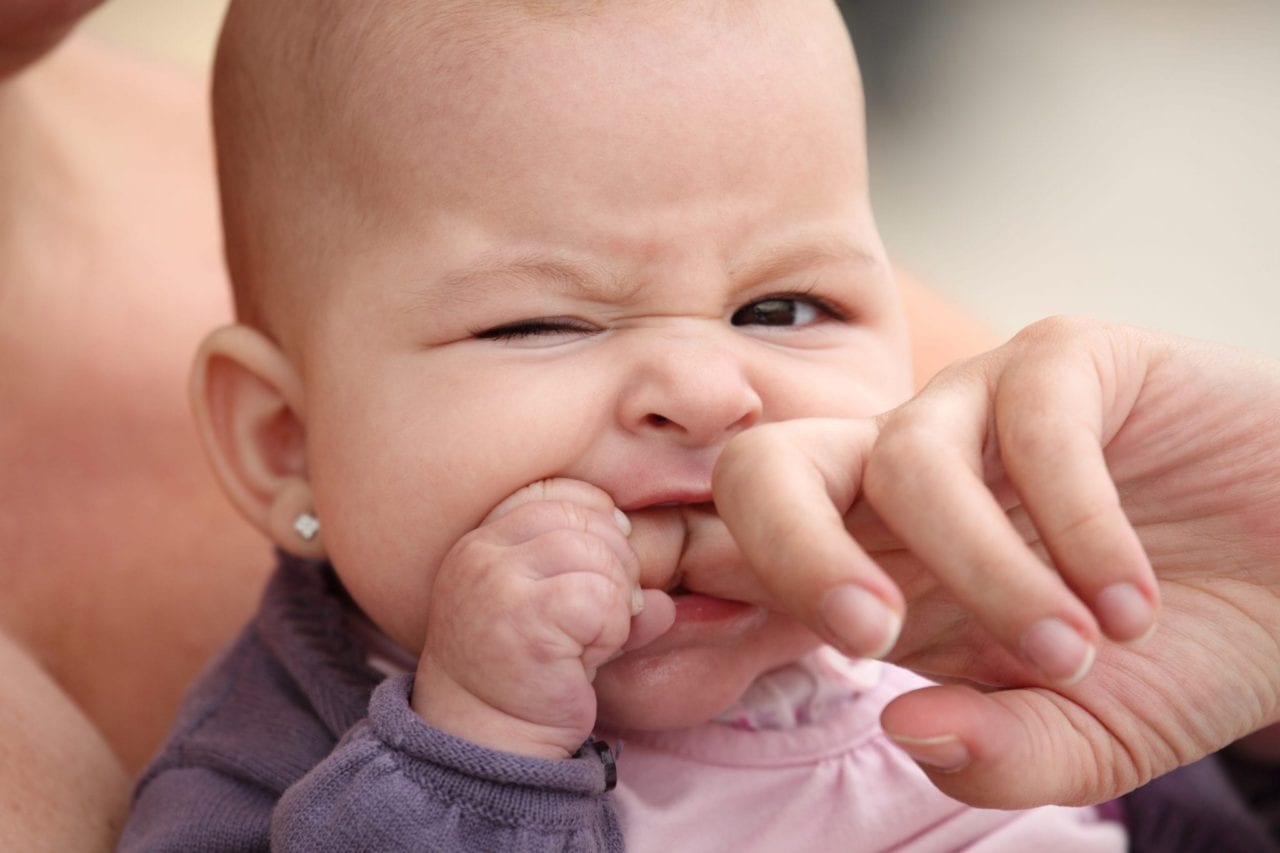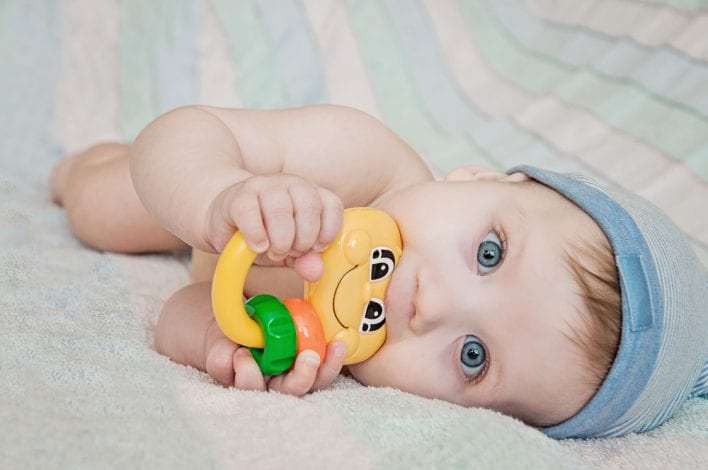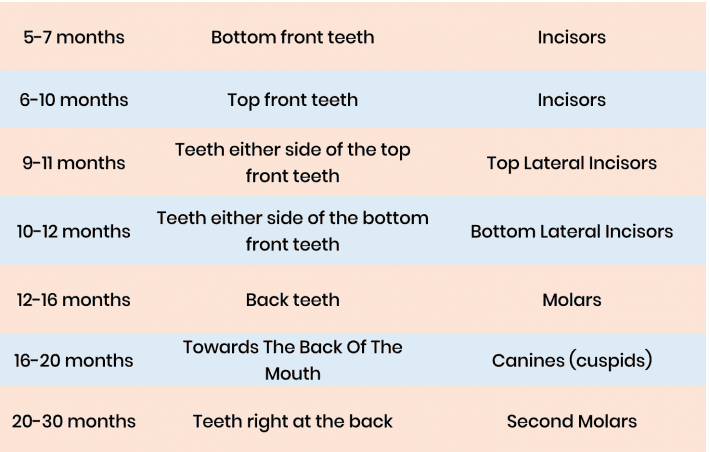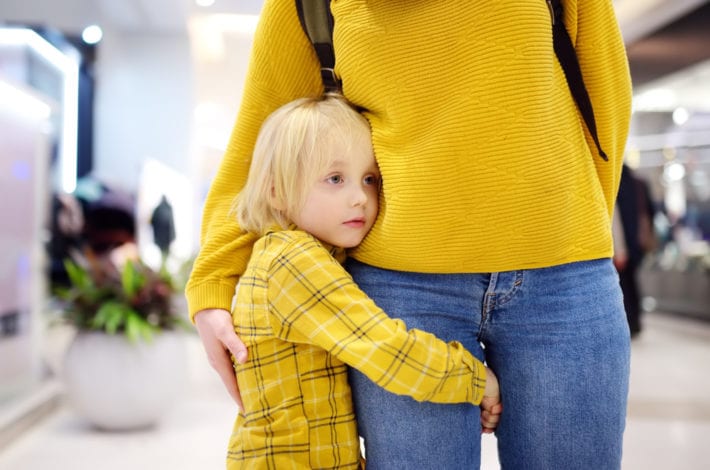

As a new parent there are many firsts that you look forward to with excited anticipation: the first smile, the first word, the first time your baby crawls. But the arrival of the first tooth is not one of them. When it comes to this ‘first’ there’s a real dread that teething will be turn your baby into a cranky red-cheeked dribbler and throw any routine or rest you have worked so hard to get, completely up in the air.


How will I know when my baby is teething?
The signs of teething can vary from one baby to another, with many only getting a few of the symptoms and others seeming to go through the whole gamut. Because all babies start teething at different times and respond in different ways it can be easy to mistake the start of teething and put it down to your baby just being a bit grumpy or out of sorts. Here are the most common signs to look out for:
Drooling
If your baby starts to drool so much that they start to resemble a mini St Bernard, then it could be a sign of the beginning of teething. Babies produce more saliva when they are teething because it helps to cool down tender and inflamed gums. Keep a bib (or two or three) handy to catch any dribbles and to avoid drool leaving wet patches on your baby’s neck or chest, which can chafe in colder weather.
Swollen and bulging gums
Cutting teeth can be a pain in the gum for babies. You may notice your baby’s gums are red and swollen as their teeth start to push through. It can take about 8 days for a tooth to push through gums and so it may be a while before you can actually see the first little white tip of your baby’s first tooth.
Wanting to chew and gnaw things
Teething can turn babies into mini vampires who try to bite your finger, your nipples (ouch) or anything they can get their little hands on. Gnawing down on something hard can be a good way to soothe inflamed gums. Of course, babies like to put things in their mouths to chew on and explore them anyway but if you notice this happening more often it could be mean that first tooth is going to appear soon.
Pulling their ears and rubbing their cheeks
Babies do a really good job of finding ways to self-soothe when teething pain strikes. By rubbing their cheeks and chin and pulling their ears they create counter pressure to ease a little of the discomfort. So, if you notice your baby doing this it could be another sure-fire sign that a tooth is on the way.
Refusing feeds
If your previously hungry baby begins to refuse and seems to go off their food then it could be because their gums are sore due to teething. Try to keep feeding your baby as much as you normally would. Try short and more frequent milk feeds. If they are on solids then try giving soft or pureed foods, which your baby won’t have to chew.
Disturbed sleep
Teething pain can wake babies early from naps and cause them to wake several times in the night looking for comfort. In the quiet hours of night babies will often notice the pain more because there are no distractions. Of course, because they are then missing out on sleep they are crankier in the daytime too. And when your baby’s mood and sleep is disturbed, of course, yours is too. It’s not much fun for anyone.
There are plenty of things you can do to help ease your baby’s pain. Find out the best teething remedies here.
When will my baby start teething?
Some babies are actually born with a tooth (although it’s rare enough to make headlines). Some keep a gummy tooth-free smile until after their first birthday. Most babies start teething between 4 and 7 months of age. It can take a while for teeth to actually break through the gums and so you may notice signs of teething several weeks before you spy the tip of your baby’s first pearly white. All babies are different but this table is a rough guide as to which teeth to expect when. Most children will have their full set of milk teeth by the time they are two and a half years old.


Is it definitely teething?
If you’ve noticed a few of these symptoms then it probably does mean your baby is teething. If they have diarrhoea, a high fever, signs of a possible ear infection and a runny nose then don’t assume it is teething and if you have any concerns always get your baby checked by your GP to make sure they are not poorly. Research carried out in 2016 looked into commonly held beliefs that teething caused fevers and other symptoms of illness. They found that ‘while teething can make babies feel miserable, it usually won’t make them sick.’ It also found that ‘a slight rise in body temperature was another common symptom, but most often was not high enough to be considered a fever.’ If your baby’s temperature rises to over 38 degrees Celsius, this is considered to be a fever and you should always seek medical advice.





